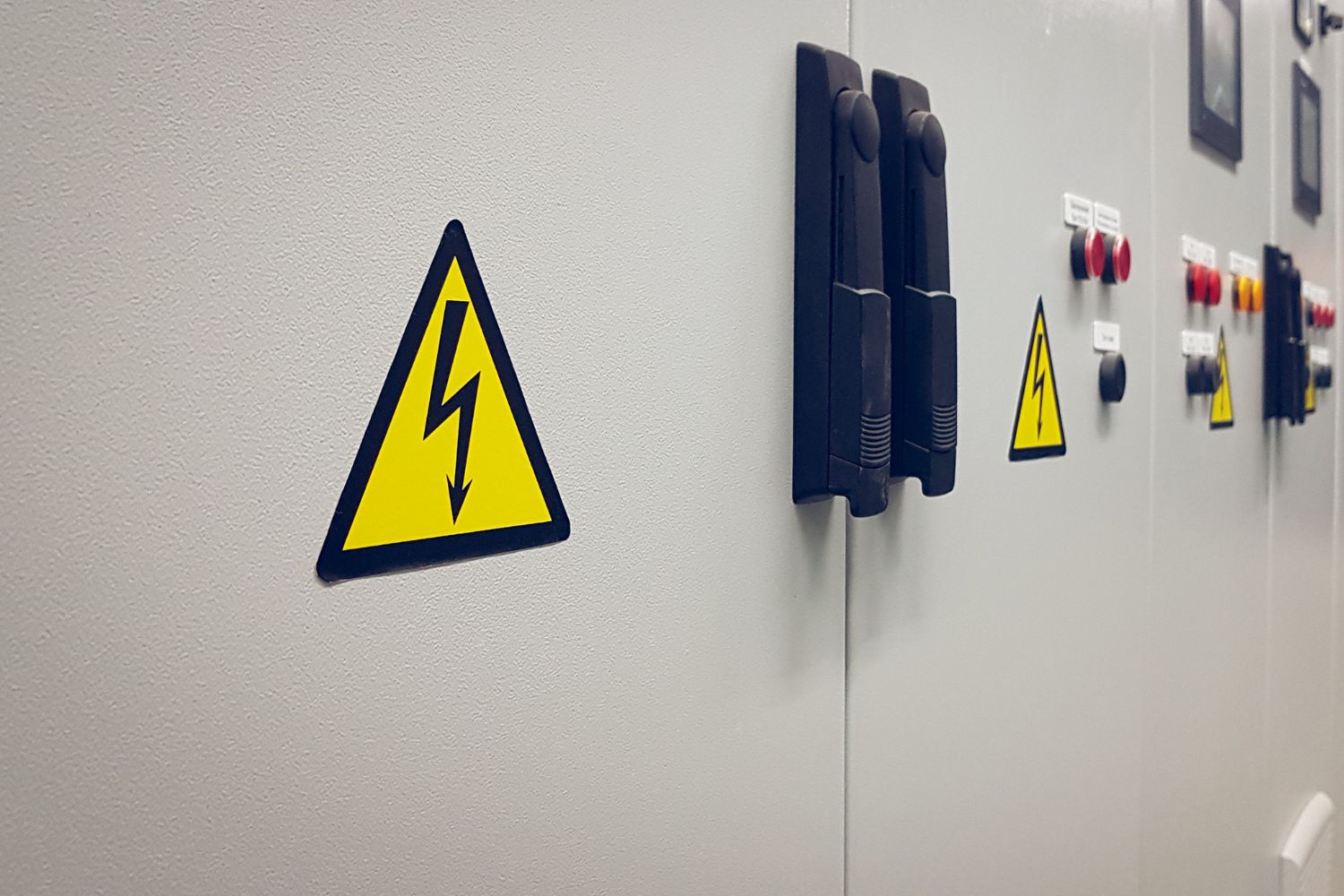Why is the safety of your electrical room important?
Your safety should be the first thing that you should think about when entering an electrical room. Wearing the appropriate individual protection depends on the operations to be carried out there. Every year, several dozen workers are electrocuted.
These accidents mainly occur during operations on fixed low-voltage installations while using portable tools or during interventions on or near live equipment. Other types of incidents in your electrical room can cause fires.
Safety of the electrical room for the operator
For 40 years the average number of electrocutions per year has been decreasing. On average, there are 30 deaths by electrocution per year in France and 3200 instances of electric shock. (Source: ONSE). The switchboards installed in the electrical room carry dangerous voltages. Even if the switchboard is safe and when its’ doors are closed, it is important to be aware that the danger increases when approaching live components, i.e. when opening its’ doors.
The risks of electrocution through direct or indirect contact
A person is suffers an electric shock when an electric current passes through their body and causes injuries of varying degrees of severity. Electrocution is when this electric current causes the person's death. A shock can occur through direct contact (with an active part) or indirect contact (with a ground that is accidentally energised). The current only flows if the circuit is closed, i.e. if there are either two points of contact with bare live parts at different potentials, or one point of contact with a bare live part and another with earth.
The severity of an electric shock depends upon:
- the frequency of the current,
- the current intensity (danger from 5 mA upwards),
- the duration of the passage of the current,
- the surface of the contact area,
- the path of the current,
- the state of the skin (dry, wet, damp),
- the nature of the soil.
The effects of alternating electric current according to its intensity on the human organism:
- 0.5 mA: skin perception
- 5 mA: electric shock
- 10 mA: muscle contractions leading to inability to let go
- 25 mA: paralysis of the respiratory muscles (asphyxiation beyond 3 min)
- 40 mA for 5 seconds: ventricular fibrillation
- 50 mA for 1 second: ventricular fibrillation
- 2,000 mA: inhibition of nerve centres
(Source: INRS)
Risks related to your electrical equipment
The equipment may be the cause of the accident, which requires particular attention to the safety of the installation and its maintenance. 85% of electrical installations in France over 15 years old have electrical anomalies (defective protective conductors, damaged insulation, poor tightening, etc.). In 2019, 295,000 instances of damage due to electrical faults were recorded.
These risks linked to equipment can lead to the stoppage of your production; 
The risks of internal arcing
Internal arcing can occur in electrical equipment when the operating conditions for which it was designed are not met or due to lack of maintenance (presence of damp or conductive dust, rodents, heating). As the arc develops, it produces radiant heat of very high intensity which can cause serious burns to anyone in the vicinity. Parts of the inside of the equipment and enclosure may be ejected, which could seriously affect people in the vicinity. As it develops, the arc can perforate the enclosure, if it is in contact with it or very close to it.
Typical examples are mains overvoltage, inappropriate equipment specifications, inadequate protection curves, incorrect use of equipment, and the presence of a foreign body or rodent in the enclosure, use of equipment after the end of its rated life or rated electrical endurance.
Example of an internal arc
Fire risks
According to the ONSE, electricity is the cause of a quarter of fires. The main causes are:
- heating of the cables due to overload or incorrect tightening
- short circuit leading to an electric arc
- an insulation fault leading to an abnormal current flow between receiver and earth or between receiver and earth
- faulty contacts (such as loose or oxidised connections) leading to abnormal resistance and overheating.
- lightning or electrostatic discharge
(Source: INRS)
In summary
It is important to remember that accidents can occur both in the installation phase and during subsequent interventions.
The main risks incurred, if the safety rules of your installation are not respected, are:
- Electric shock.
Electric shocks can be more or less serious depending on the intensity of the electric current. - The appearance of an internal arc.
Failure to comply with the operating conditions provided for and lack of maintenance of the installations may increase the chances its occurence. - Fire
It is often caused by external elements that are due to irregular care or maintenance.


